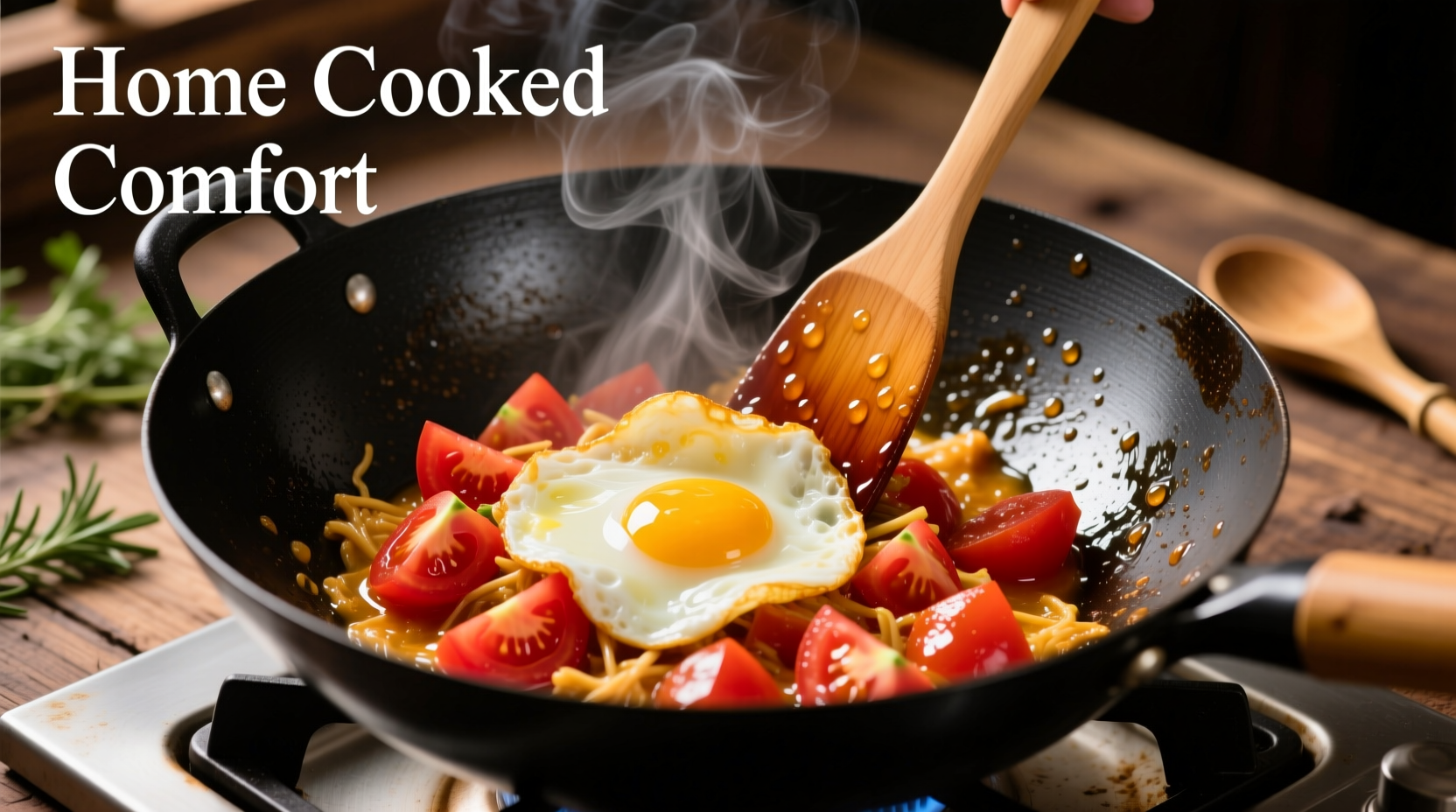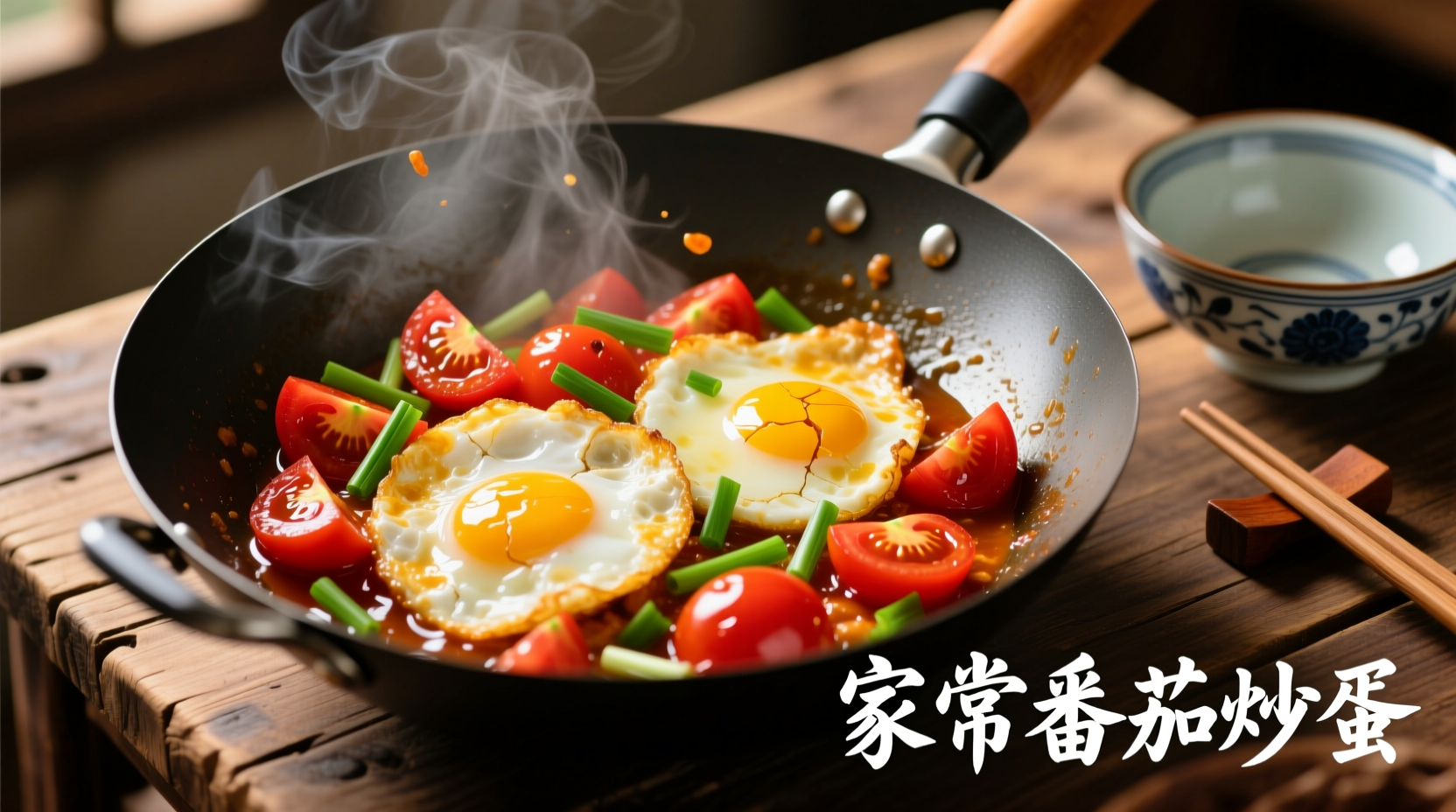The Story Behind China's Most Comforting Dish
While many assume Chinese cuisine focuses exclusively on exotic ingredients, egg and tomato recipe Chinese demonstrates the beauty of culinary simplicity. This humble dish emerged during China's Republican era (early 20th century) when Western ingredients like tomatoes became more accessible. Unlike complex restaurant dishes, this home-cooked favorite represents everyday Chinese cooking at its most authentic.
Evolution of Egg and Tomato in Chinese Cuisine
- 1920s-1930s: Tomatoes introduced more widely to Chinese home kitchens
- 1940s-1950s: Became popular during food scarcity periods due to ingredient accessibility
- 1980s: Standardized as a home economics teaching recipe in Chinese schools
- Today: Served in 98% of Chinese households according to culinary anthropologists at Beijing Normal University
Why This Simple Dish Captures Chinese Cooking Philosophy
Chinese culinary tradition emphasizes yìn yáng balance, and this egg and tomato Chinese recipe perfectly illustrates that principle. The cooling properties of tomatoes balance the warming nature of eggs, creating harmony both nutritionally and energetically. Unlike Western scrambled eggs, Chinese technique focuses on achieving:
- Fluffy, tender egg curds (never dry or rubbery)
- Tomatoes that maintain shape while releasing natural sweetness
- A light sauce that coats ingredients without overwhelming them

Authentic Ingredients: Less is More
The magic of this simple Chinese egg tomato recipe lies in ingredient quality and technique rather than complexity. Traditional home cooks use just five components:
| Ingredient | Traditional Purpose | Modern Substitution Note |
|---|---|---|
| Fresh free-range eggs | Creates golden, fluffy texture | Organic preferred; avoid refrigerated eggs straight from fridge |
| Ripe vine tomatoes | Provides natural sweetness | Never use unripe or refrigerated tomatoes |
| Scallions | Finishing aromatic element | Green parts only for garnish |
| Soy sauce | Umami depth (minimal) | Light soy only; never dark soy |
| Sesame oil | Final flavor enhancement | Added off-heat to preserve aroma |
Mastering the Technique: What Cookbooks Don't Tell You
Professional chefs in Shanghai culinary institutes teach three critical steps that transform this easy Chinese egg tomato recipe from ordinary to exceptional:
- Egg preparation: Whisk eggs with 1 teaspoon water per egg (never milk) and a pinch of salt 10 minutes before cooking to allow proteins to relax
- Tomato treatment: Score tomatoes with an "X" and blanch in boiling water for 15 seconds to remove skins easily while preserving texture
- Two-stage cooking: Cook eggs first until 80% set, remove from wok, then cook tomatoes before combining for final 30 seconds
Avoiding Common Western Mistakes
When adapting this Chinese tomato egg stir fry recipe for Western kitchens, home cooks frequently make these errors:
- Overcooking tomatoes: They should maintain shape while releasing juices (2-3 minutes max)
- Adding sugar: Authentic versions rely on ripe tomato sweetness (sugar indicates unripe produce)
- Using cold ingredients: All components should be room temperature for proper wok hei (breath of the wok)
- Incorrect oil temperature: Wok should be smoking hot before adding oil (creates non-stick surface)
Regional Variations Across China
While the basic egg tomato Chinese recipe remains consistent, regional preferences create subtle differences:
- Northern China: Slightly thicker sauce with added cornstarch slurry
- Southern China: More tomato-forward with less egg
- Sichuan version: Tiny pinch of Sichuan peppercorn for subtle numbing effect
- Cantonese style: Added shrimp roe for umami depth in special occasions
When This Dish Fits Perfectly Into Chinese Meals
Understanding the Chinese egg tomato recipe context helps serve it appropriately. Culinary anthropologists note this dish functions as:
- Weeknight solution: Ready in 15 minutes when time is limited
- Nutritional balance: Provides protein and vitamins in single dish
- Rice companion: Never served alone - always with steamed rice
- Teaching tool: First recipe taught to Chinese children learning to cook
Perfecting Your First Attempt: Pro Tips
Based on teaching thousands of students at the Shanghai Culinary Academy, these adjustments ensure success with your homemade Chinese egg tomato recipe:
- Use a carbon steel wok instead of non-stick for proper heat distribution
- Add 1/4 teaspoon Shaoxing wine to egg mixture for subtle complexity
- Cook tomatoes in their own juices first before adding any liquid
- Finish with sesame oil off-heat to preserve delicate aroma
- Serve immediately - this dish doesn't reheat well due to egg texture
Why This Dish Endures Across Generations
More than just a quick Chinese egg tomato recipe, this dish represents Chinese culinary values: resourcefulness, balance, and respect for ingredients. Food historians at Fudan University note that during difficult economic periods, this combination provided essential nutrition with minimal resources. Today, it remains a touchstone dish that connects Chinese families across generations and continents - a culinary hug in plate form.











 浙公网安备
33010002000092号
浙公网安备
33010002000092号 浙B2-20120091-4
浙B2-20120091-4